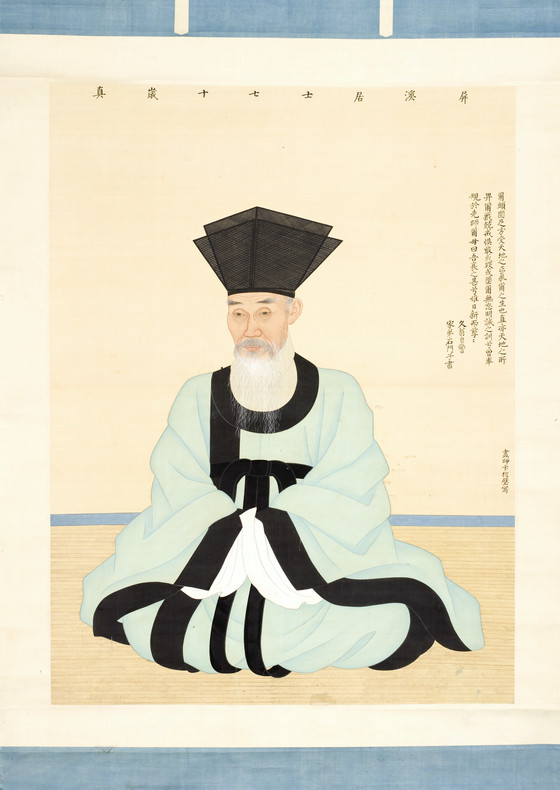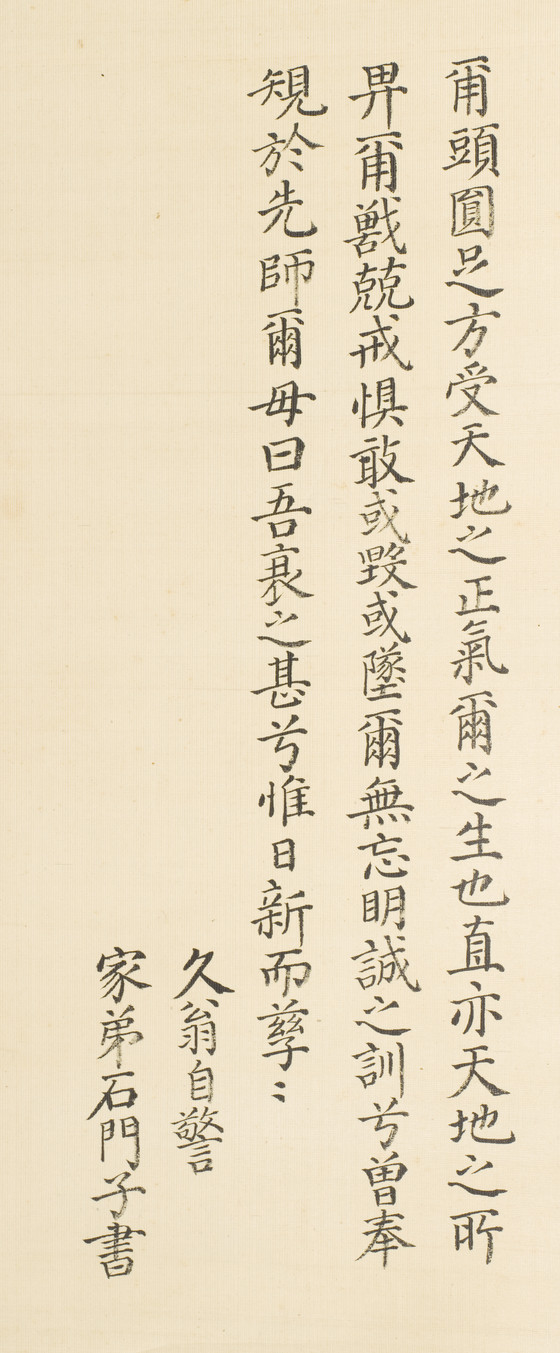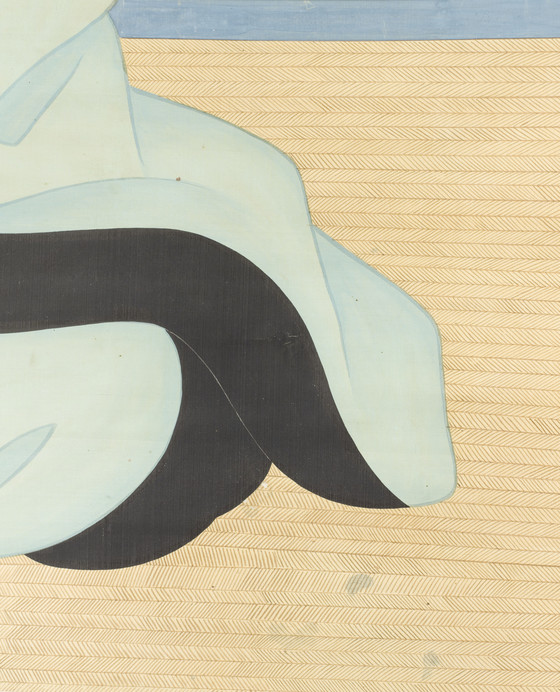Yun Bonggu first met the artist Byeon Sangbyeok for the occasion of this seventieth-year portrait, although Yun confessed that he had previously heard about the artist many times....
Yun Bonggu first met the artist Byeon Sangbyeok for the occasion of this seventieth-year portrait, although Yun confessed that he had previously heard about the artist many times. After he saw the final version, Yun praised the painter not only for painting his image so realistically but also for capturing his spirit. When the portrait was displayed, Yun noted that he was amused by the fact that neighbors were awed by the realistic depiction.[9] However, Yun Bonggu also appreciated that the artist had fulfilled one of the primary functions of formal portraits in Korea: the portrait would transmit Yun Bonggu’s ideas to future generations.
Footnotes
[1] It was believed in ancient Chinese philosophy that heaven was round and earth was square. According to the physiognomy theory of Yi Hwang (1501-1570), the expression “a head is round and feet square” means that the body resembles the heaven and earth and, therefore, the universe.
[2] 屏溪居士七十歲真
甭[爾]頭圓足方 受天地之正氣 爾之生也直 亦天地之所畀
甭[爾]戰兢戒慎 敢或毀或墜 爾無忘明誠之訓兮 曾奉規於先師
爾毋曰 吾衰之甚兮 惟日新而孳孳
久翁自警 家弟石門子書
畫師卞相璧寫
The translation into English was modified from Kang Kwan-shik, “Self-cultivation in the Portraits of Joseon Literati Scholars,” Korea Journal (summer 2005), 200.
[3] A representative example of a Byeon cat painting is Cats and Sparrows (National Museum of Korea). For an illustration, see Hwi-joon Ahn, Gukbo 10: Huihwa (Seoul: Aegyung, 1989), 129.
[4] Choi Sunwu, “Byeon Sangbyeok,” in Encyclopedia of Korean Culture [Hanguk minjok daebaekgwa sajeon] , vol. 9, 668.
[5] Yun Bonggu’s comment, which is the same as the inscription on the painting in discussion, was included in his own book: Yun Bonggu, Collected Works of Byonggye [Byeongye sunsaeng jip], gwon 44, 31.
[6] Concerning the relationship between identity and portraits, see Kang Kwan-shik, “Self-cultivation in the Portraits of Joseon Literati Scholars,” Korea Journal (summer 2005), 182-215. The original article, in Korean, is Kang Kwan-shik, “Joseon sidae chosanghwa eui dosang gwa shimsang,” Misul sahak 15 (2001.8), 7-48. The discussion between the author and discussant, Yi Taeho, follows in Misul sahak 15 (2001.8), 49-55.
[7] Two of Yun’s portraits are now in the National Museum of Korea. See Seonmi Cho, Korean Portraits [Hanguk eu chosanghua] (Seoul: Yeolhwadang, 1983), 310.
[8] Yun Bonggu, Collected Works of Byonggye [Byeongye sunsaeng jip], gwon 43, 42b, 43a.
[9] Ibid.
More...









